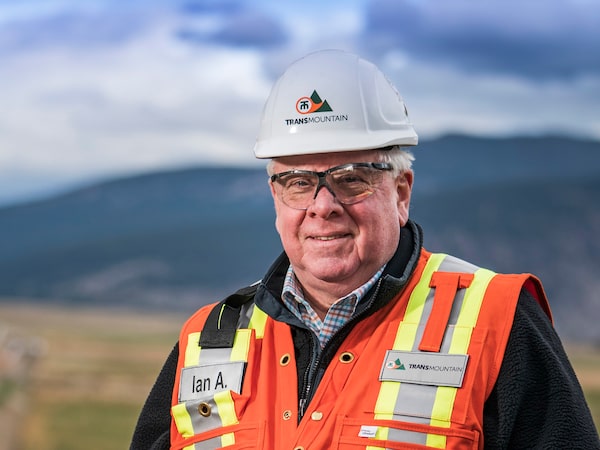
Ian Anderson is the president and chief executive officer of Trans Mountain Corp.JOHN LEHMANN/Handout
Ian Anderson is the president and chief executive officer of Trans Mountain Corp.
For 21 days in late November and early December of 2021, the Trans Mountain pipeline was not in operation. Its precautionary shutdown as a result of heavy rains and flooding in B.C. and Washington State was the longest period in its nearly 70-year history that the pipeline running from Alberta did not deliver crude oil and petroleum products to this province.
The heroic and tireless efforts of so many Trans Mountain workers and contractor teams working on the expansion project have been acknowledged privately and publicly by me and others. Hundreds of people worked around the clock to reinstate access to the pipeline lost because of damaged roads, changes in river flows and adverse weather. We cleared highways, built bridges and managed watercourses to allow for repairs, working co-operatively with provincial and federal officials and others in industry with a shared and selfless goal of doing what was needed to get British Columbians reconnected.
The story very few people know, but one I think is important to share, is the work that happened behind the scenes to ensure the province didn’t run out of fuel. When the pipeline was shut down, it became quickly apparent to all involved that it would be a matter of days before the situation became critical. Only a handful of people have understood just how close we were to a critical situation – one that would have affected every British Columbian.
Over the first few days of the shutdown, it became clear that the access to roads needed to assess and safely restart the pipeline was going to take weeks, not days. I was asked many times by government officials, news media and others how long it would take before we run out of fuel in B.C. My answer? Nobody knows – this has never happened before.
To understand the fuel supply available in B.C., one must understand the role of the Trans Mountain pipeline. Built in 1953, we are the only pipeline delivering petroleum products to this province. On average, it transports 300,000 barrels per day to British Columbia and Washington State, and accounts for about 90 per cent of the supply of refined and unrefined products that end up in the province’s gas tanks.
A working group including ourselves, the B.C. government, the federal government and representatives from fuel refiners and suppliers came to the table daily to review the options and find solutions to ensure that critical fuel supply was maintained. The provincial government instated fuel rationing to manage the demand and ensure there was enough fuel for the operation of essential services such as emergency vehicles and food supply-chain transport. The local suppliers worked together to procure fuel by barge and by rail. This was no small task, and it took the co-operation, dedication and vision of many people to ensure British Columbians could continue with their normal day-to-day lives as much as possible when things were a long way from normal.
So why share this story now?
The Trans Mountain pipeline safely returned to service on Dec. 5, and gasoline and crude oil supply levels to its customers returned to near-normal levels within a week. By sharing this story, I hope to let British Columbians and Canadians know that even though there may be differing views about the future of fossil fuels, when push came to shove, government officials and our industry came together. I think the people of B.C. can and should take pride in knowing that differences were set aside and replaced by a common and altruistic purpose of doing the right thing for the citizens of the province.
Keep your Opinions sharp and informed. Get the Opinion newsletter. Sign up today.